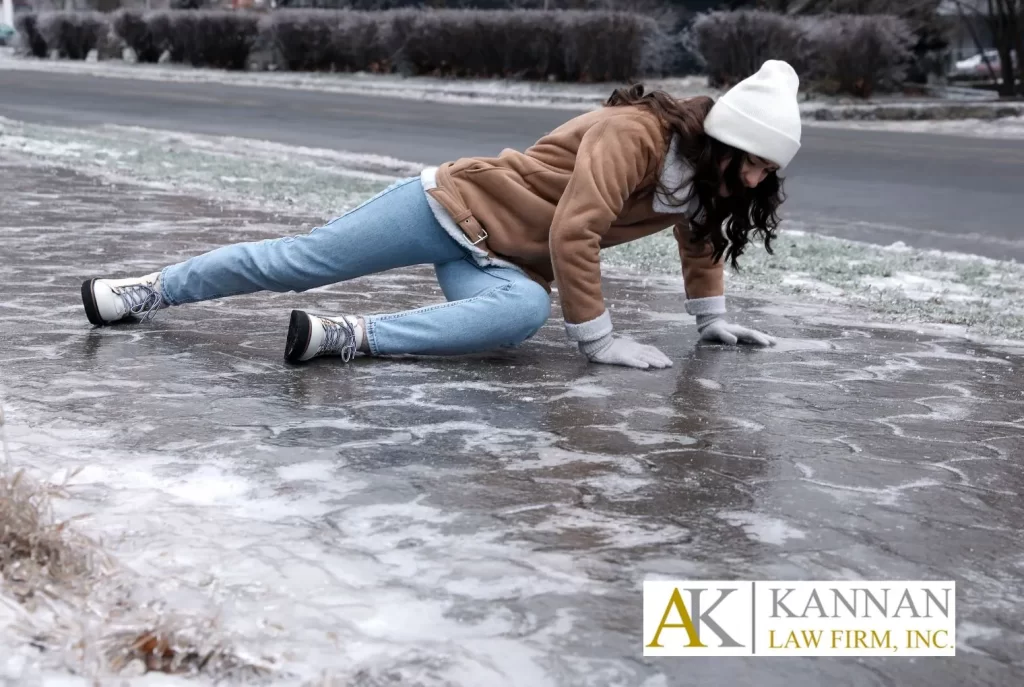Differences Between a Trip and Fall and a Slip and Fall Accident
Differences Between a Trip and Fall and a Slip and Fall Accident
If you have any questions related to personal injury, call us today at (619) 746-8879
When navigating the complexities of personal injury claims, it’s essential to understand the distinctions between a trip and fall and a slip and fall accident. Both types of incidents involve someone losing their balance and getting injured, but they occur under different circumstances and often involve unique legal considerations.
Recognizing these differences can help you determine how to proceed, including whether to consult a slip and fall lawyer or a trip and fall lawyer.
Key Takeaways
- Slip and fall accidents typically result from slippery or slick surfaces, causing a loss of traction and balance.
- Trip and fall accidents involve obstructions or uneven surfaces that cause someone to stumble.
- Liability in both cases falls under premises liability law, requiring evidence that the property owner failed to address known hazards.
What is a Slip and Fall Accident?
A slip and fall accident occurs when someone loses their footing due to a slippery or slick surface. Common causes of slip and fall incidents include:
- Wet floors from spills or leaks
- Ice, snow, or rainwater accumulation
- Polished or excessively smooth flooring
The key element in a slip and fall accident is the lack of traction between the surface and the person’s shoes, leading to a loss of balance. These accidents are particularly common in places like grocery stores, restaurants, and parking lots.
What is a Trip and Fall Accident?
On the other hand, a trip and fall accident happens when someone’s foot catches on an object or uneven surface, causing them to stumble forward. Typical causes of trip and fall incidents include:
- Uneven sidewalks or pavements
- Loose rugs or carpets
- Cluttered walkways
- Broken or poorly maintained steps
Unlike a slip and fall, a trip and fall is usually caused by an obstruction or irregularity on the walking surface, which makes it difficult for a person to move freely.
How to Determine Liability
Both slip and fall and trip and fall accidents fall under premises liability law, meaning the property owner may be held responsible for injuries caused by unsafe conditions on their property. However, proving liability requires understanding the specific cause of the accident.
For a slip and fall accident, the injured party must demonstrate that the property owner knew or should have known about the hazardous condition (like a wet floor) and failed to address it. In a trip and fall accident, the focus is often on whether the obstruction or uneven surface was obvious and avoidable, or if the property owner neglected their duty to maintain a safe environment.

The Role of a Lawyer in A Trip and Fall or Slip and Fall Accident
If you’ve been injured in either type of accident, consulting an experienced slip and fall lawyer or trip and fall lawyer can make a significant difference. These legal professionals specialize in gathering evidence, determining liability, and negotiating settlements to ensure you receive fair compensation for your injuries.
Contact Kannan Law if you are seeking compensation for a trip and fall accident or are being sued for this reason. We are personal injury lawyers in San Diego.
Preventing These Accidents
While it’s impossible to eliminate all risks, being aware of potential hazards can reduce the likelihood of a slip and fall or trip and fall accident. Property owners should:
- Regularly inspect and maintain their premises
- Promptly address spills and other hazards
- Provide adequate lighting in high-traffic areas
As a visitor or guest, staying vigilant and wearing appropriate footwear can also help you avoid injury.
Conclusion
Understanding the differences between a trip and fall and a slip and fall accident is crucial for determining how to approach your personal injury case. Whether it’s caused by a slippery surface or an uneven walkway, these incidents can lead to serious injuries and long-term consequences.
If you’ve been involved in such an accident, contacting a skilled slip and fall lawyer or trip and fall lawyer can help you navigate the legal process and secure the compensation you deserve.
Frequently Asked Questions
What should I do immediately after a slip and fall or trip and fall accident?
After an accident, document the scene by taking photos of the hazard and your injuries, collect contact information from witnesses, report the incident to the property owner or manager, and seek medical attention promptly. These steps will help support your claim later.
How long do I have to file a claim for a slip and fall or trip and fall accident?
The time frame, known as the statute of limitations, varies by state. Generally, it ranges from one to three years from the date of the accident. Consulting a lawyer promptly ensures you don’t miss important deadlines.
Can I still file a claim if I was partially at fault for the accident?
Yes, many states follow comparative negligence laws, which allow you to recover damages even if you share some fault. However, your compensation may be reduced based on your percentage of responsibility.
